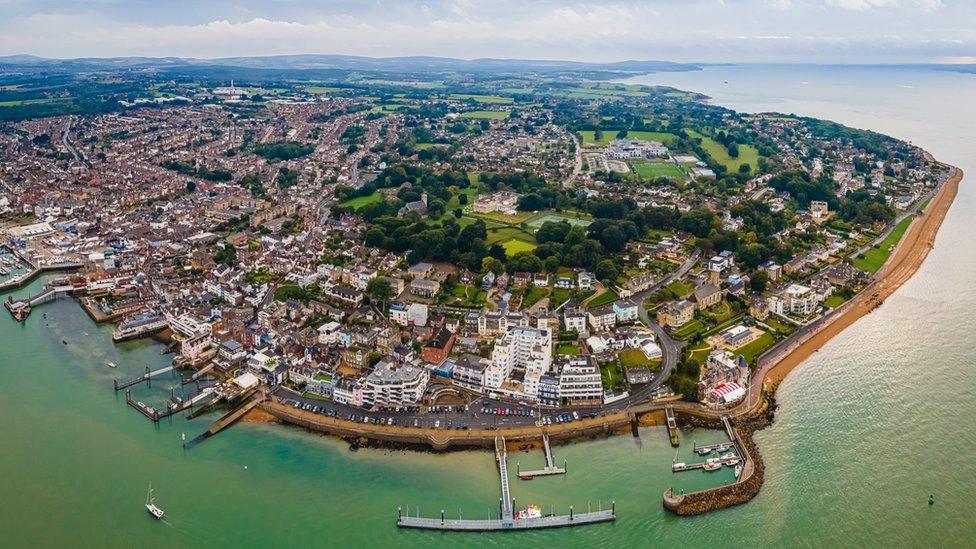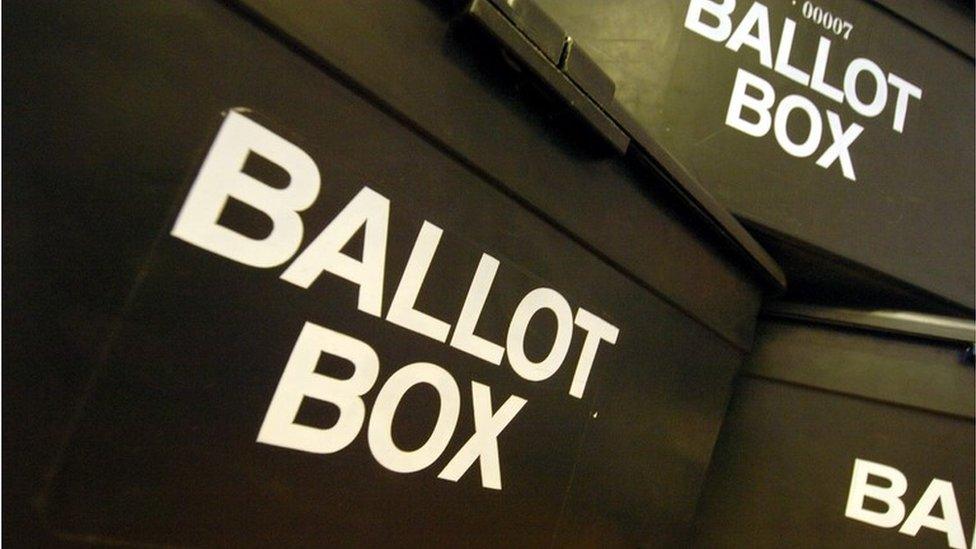Two Isle of Wight constituencies set out in boundary review
- Published

The Isle of Wight is currently the UK's most populous parliamentary constituency
The Isle of Wight is set to be split into two Parliamentary constituencies after a national review of boundaries.
The Boundary Commission has published its final report into the 543 English electoral constituencies.
Under the plans, Newport and Cowes would sit in Isle of Wight West while Ryde, Shanklin and Sandown would be in Isle of Wight East.
If approved, they would come into effect in time for the next general election.
Plans in 2010 to add part of the island to a mainland constituency proved hugely controversial.
Under the commission's proposals, first outlined in 2020 the Isle of Wight - which is currently represented by Conservative Bob Seely - would have two MPs in future.
It is currently the UK's most populous single constituency, but the plan would split it into Isle of Wight West, external with 59,911 voters and Isle of Wight East, external with 56,805 voters.
The island is one of two "protected" constituencies in England that are permitted less than 69,724 electors.
Following a public consultation, the commission altered its border between the two constituencies and opted for an east-west rather than north-south split of the island as the "most likely to command public support".
The initial proposal to split the constituencies based on the River Medina was modified to move the boundary to the east of Cowes.
"Those that commented specifically on our proposed constituencies were broadly supportive of our revised proposals," the report said.
Earlier this year, Mr Seeley said he would stand in the Isle of Wight West constituency at the next election.
The changes are part of the Boundary Commission's work aiming to make Parliament fairer by giving each constituency a roughly similar number of voters.
England was allocated 543 constituencies for the review - an increase of 10.
The government now has four months to bring forward an order in parliament to put the final recommendations into effect.

Follow BBC South on Facebook, external, Twitter, external, or Instagram, external. Send your story ideas to south.newsonline@bbc.co.uk, external.
- Published8 November 2022

- Published8 June 2021

- Published12 May 2015
- Published20 January 2011